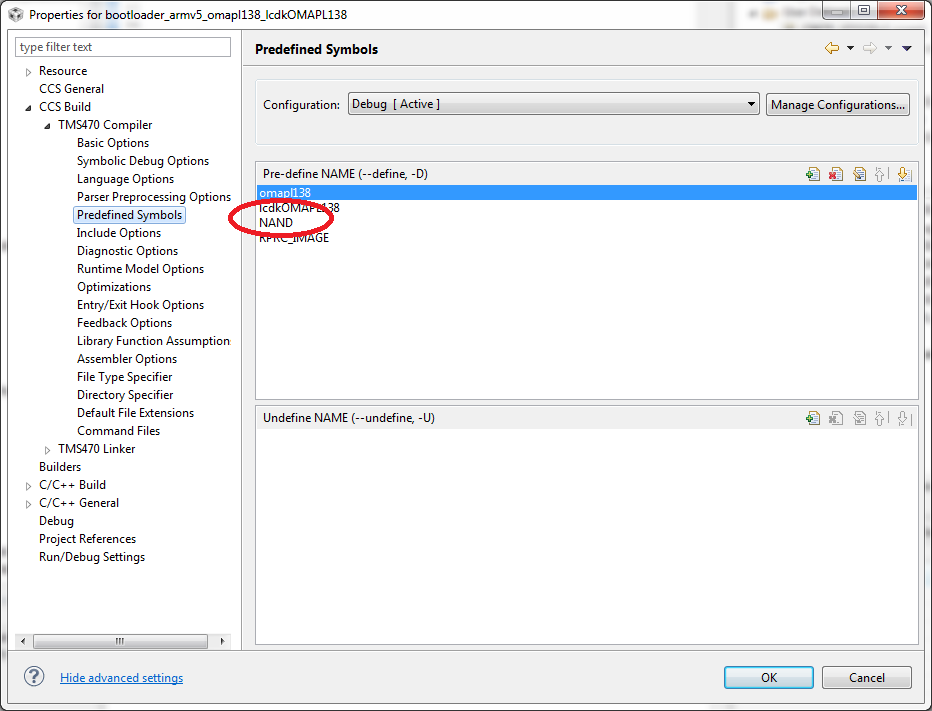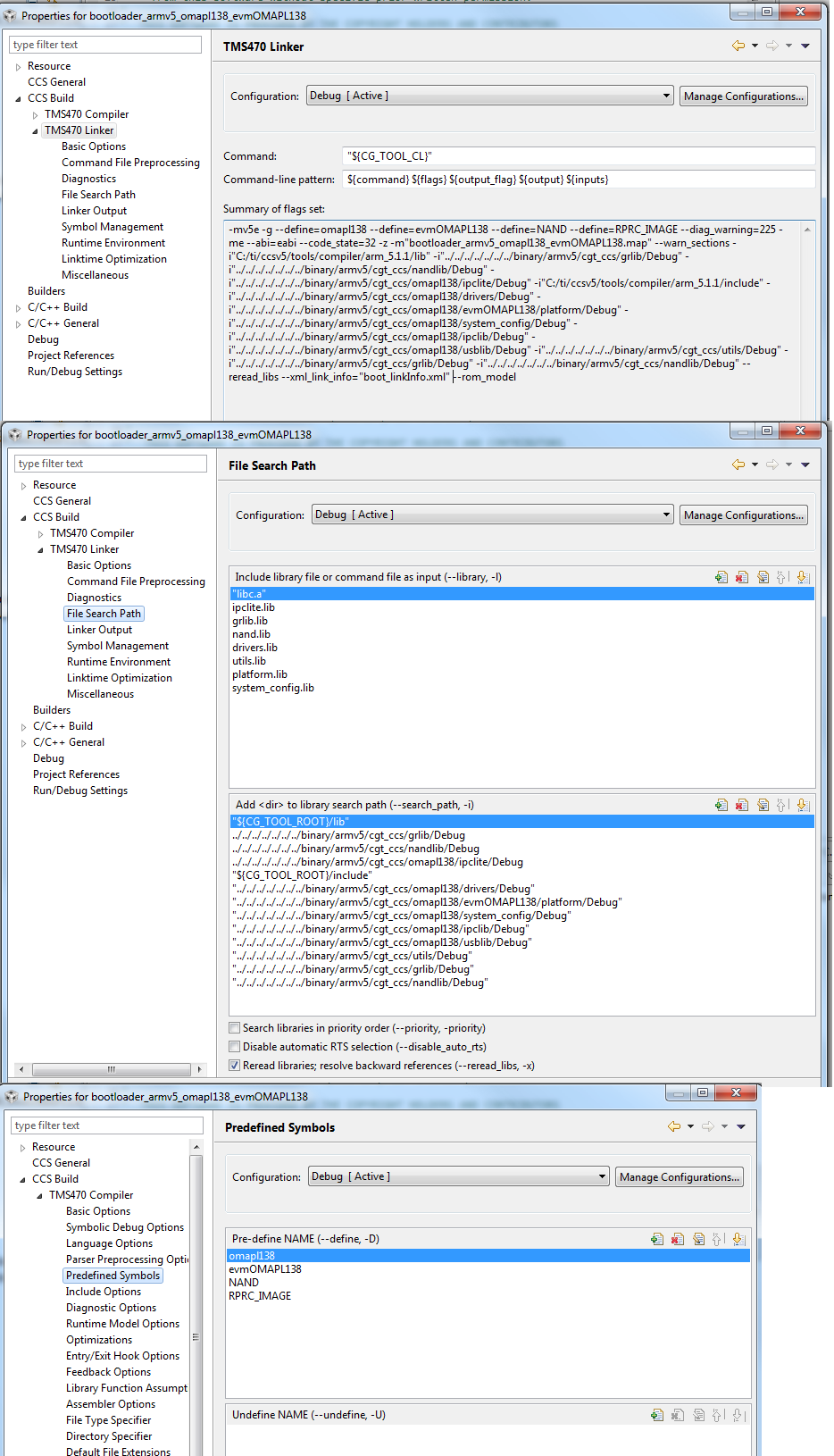This seems like it should be easy, but I am having a lot of trouble booting a DSP program on the OMAP L-138 from NOR flash. I have a LogicPD TMDSEVML138 and have been following the steps here: http://processors.wiki.ti.com/index.php/Boot_Images_for_OMAP-L138#Booting_DSP_Binaries
This works just fine. I follow the steps under "Running" and the program boots out of NOR and the lights flash. I decided to try another program and see if I really understood what was going on; clearly I do not. I downloaded 1020489B-1_CCSv4-2-4_with_SOM-M1_BSL_WS.zip from LogicPD and tried to connect their LCD test to the ARM UBL from the TI wiki. I changed the linker_dsp.cmd file to:
/*****************************************************************************
* linker command file for OMAP-L138 test code.
*
* © Copyright 2009, Logic Product Development Company. All Rights Reserved.
******************************************************************************/
-l rts6740.lib
-stack 0x00000800
-heap 0x00000800
MEMORY
{
dsp_l2_ram: ORIGIN = 0x11800000 LENGTH = 0x00040000
shared_ram: ORIGIN = 0x80001000 LENGTH = 0x00020000
external_ram: ORIGIN = 0xC0000000 LENGTH = 0x08000000
arm_local_ram: ORIGIN = 0xFFFF0000 LENGTH = 0x00002000
}
SECTIONS
{
.cinit > shared_ram
.text > shared_ram
.const > shared_ram
.bss > shared_ram
.far > shared_ram
.switch > shared_ram
.stack > shared_ram
.data > shared_ram
.sysmem > shared_ram
.cio > shared_ram
}
After building the .bin with AISGen it does not actually run. I am totally confused as to why one program works while the other does not. What am I missing?




